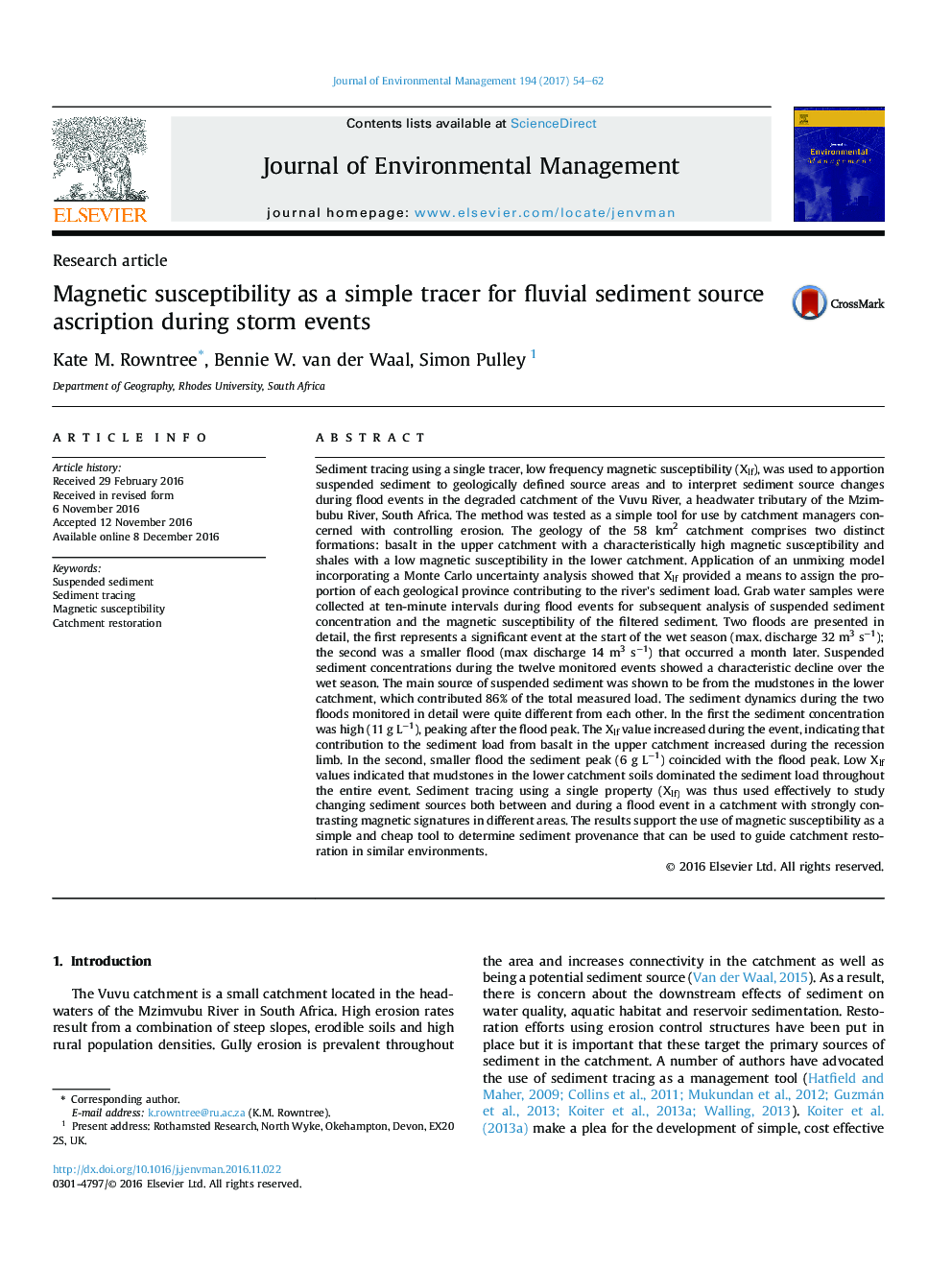| کد مقاله | کد نشریه | سال انتشار | مقاله انگلیسی | نسخه تمام متن |
|---|---|---|---|---|
| 5116918 | 1485221 | 2017 | 9 صفحه PDF | دانلود رایگان |
- Magnetic susceptibility used as a single tracer to identify sediment provenance.
- Sediment source contributions varied between and within storm events.
- Method is simple, quick and cheap but limited by catchment geology.
- Method has potential management application to catchment restoration.
Sediment tracing using a single tracer, low frequency magnetic susceptibility (Xlf), was used to apportion suspended sediment to geologically defined source areas and to interpret sediment source changes during flood events in the degraded catchment of the Vuvu River, a headwater tributary of the Mzimbubu River, South Africa. The method was tested as a simple tool for use by catchment managers concerned with controlling erosion. The geology of the 58 km2 catchment comprises two distinct formations: basalt in the upper catchment with a characteristically high magnetic susceptibility and shales with a low magnetic susceptibility in the lower catchment. Application of an unmixing model incorporating a Monte Carlo uncertainty analysis showed that Xlf provided a means to assign the proportion of each geological province contributing to the river's sediment load. Grab water samples were collected at ten-minute intervals during flood events for subsequent analysis of suspended sediment concentration and the magnetic susceptibility of the filtered sediment. Two floods are presented in detail, the first represents a significant event at the start of the wet season (max. discharge 32 m3 sâ1); the second was a smaller flood (max discharge 14 m3 sâ1) that occurred a month later. Suspended sediment concentrations during the twelve monitored events showed a characteristic decline over the wet season. The main source of suspended sediment was shown to be from the mudstones in the lower catchment, which contributed 86% of the total measured load. The sediment dynamics during the two floods monitored in detail were quite different from each other. In the first the sediment concentration was high (11 g Lâ1), peaking after the flood peak. The Xlf value increased during the event, indicating that contribution to the sediment load from basalt in the upper catchment increased during the recession limb. In the second, smaller flood the sediment peak (6 g Lâ1) coincided with the flood peak. Low Xlf values indicated that mudstones in the lower catchment soils dominated the sediment load throughout the entire event. Sediment tracing using a single property (Xlf) was thus used effectively to study changing sediment sources both between and during a flood event in a catchment with strongly contrasting magnetic signatures in different areas. The results support the use of magnetic susceptibility as a simple and cheap tool to determine sediment provenance that can be used to guide catchment restoration in similar environments.
Journal: Journal of Environmental Management - Volume 194, 1 June 2017, Pages 54-62
